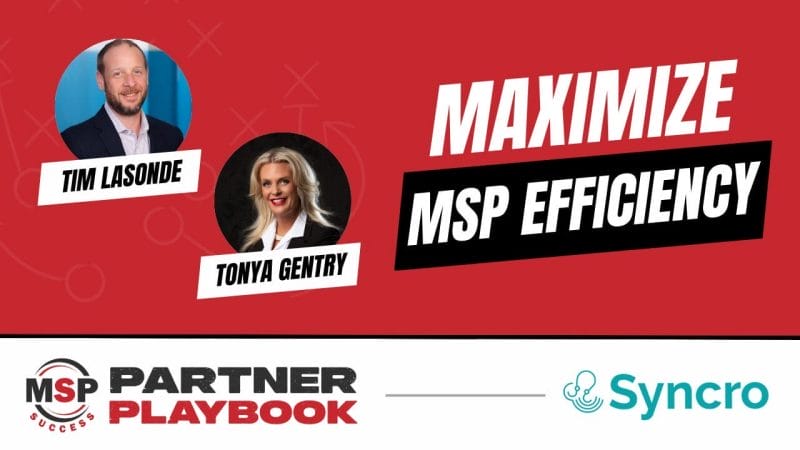How to package and price your IT stack to guarantee growth and higher profits
How you package and price your MSP services can mean the difference between just “getting by” or generating high margins for your business. But it’s not just about gross margin. Packaging and pricing correctly affects your quality of service too, because it allows you to deliver a unique value proposition that your customers are willing to pay for.
Not getting the margins right is where many MSPs get stuck. Your MSP may be growing, but if it isn’t maintaining healthy margins, it isn’t growing in the most profitable way possible. Building generous margins into your pricing is the best way to prevent your MSP from stagnating.
Your Packaging Says Everything About You – And Your Value
For MSPs, your service offering is your product. That’s why it’s so important to create clear separation between you and your competitors. What makes you different? Why would potential customers invest in you? Why are your customers willing to pay more for your processes and strategic alignment with their business?
Good packaging:
- Explains why a prospect should buy from you
- Impacts a customer’s business result
- Separates you from the competitors
- Commands a higher price (based on value)
Think of it like a bakery versus a grocery store. You might prefer one grocery store over another, but they all have the same things on the shelves. They’re high-volume, low-margin businesses. A bakery, however, is a completely different story. They may all have the same ingredients in their cabinet, but their recipes are completely different. That’s why I’ll drive past three bakeries to get a cake from my favorite one—and it doesn’t matter if the cake is $40 or $45.
That’s the crucial difference—you’re an MSP, not a reseller. Your roles and processes are your recipe that set you apart; your support and tool stack are what you’re selling. That’s what will cause customers to drive past three other MSPs to get to you, even if you’re charging 30% more.
Assemble Your Unique Offering
Look at your current offering. How much of it is “the everybody stuff”? Those are your ingredients—support, monitoring, backup, help desk, etc. Those things are standard; customers expect you to do that already.
Now, how much of it is your recipe? The recipe comprises your process, standards, and method of building a strategic roadmap for your clients. The more you’re focused on run-of-the-mill offerings instead of your unique process, the more you’re going to struggle to sell as much monthly recurring revenue (MRR) as you should.
When constructing your service offering, consider these four things:
- Focus on the end result – Consider things like how you want people to plan for technology, and how secure you want them to be.
- Define your “edges” – These are the boundaries of what is and is not included in your monthly contract. By making these things extremely clear and logical, you’ll make it easier for someone to buy from you and prevent lost profits.
- Remove entrance barriers – You want it to be as easy as possible for someone to buy from you.
- Limit choices and options – This is critical. Always use your recipe; don’t let customers pick and choose how things are done. When you do things the same way for every customer, you’re able to refine your process more. Remember: One great-fit customer is worth three to five near-fit customers.
Finally, focus on your offering’s impact on the client’s business, not just their technology. The value you provide goes beyond just the ingredients you offer.
How To Achieve Profitable Pricing
Once you have your packaging down, you need to price it right. The way MSPs determine pricing is often more complicated than it needs to be. DON’T base your pricing on a network evaluation, what a client is willing to pay, or what your competitors charge.
Instead, base your pricing on your costs, labor, and tools. Calculate your average cost per seat based on your four delivery areas: support, centralized services, technology alignment, and vCIO. I call this Picanomics; it’s how I’ve coached and built high-profit MSPs.
Your target gross margin should be 70%; even 60% is still better than most MSPs are doing. Don’t settle for less. I’ve designed a seat price calculator to make it easier for MSPs to calculate this. You’ll need to take into account the four different delivery areas—support, centralized services, your technology alignment manager, and vCIO. With these numbers, you can figure out how much each seat costs you. For example, if a seat costs you $50, you’d need to be charging $171 a seat to maintain a 70% gross margin.
If you want to add a service, say SOC, you need to make sure you have a framework that enables you to make an informed decision. Say you calculate the cost to be $3 per seat, you need to increase your overall seat price by $10 to maintain 70% gross margin.
Changing The Conversation Around Price
If you package your services in a way that showcases your unique value proposition, customers won’t care (or ask you to drill down into your calculator) what you charge. That’s because you’ve helped them to understand that the additional investment that they make with you is going to lower their risk, make them more productive, and help them make better decisions. We call that reframing. Once you make that connection, the whole conversation around price changes.











